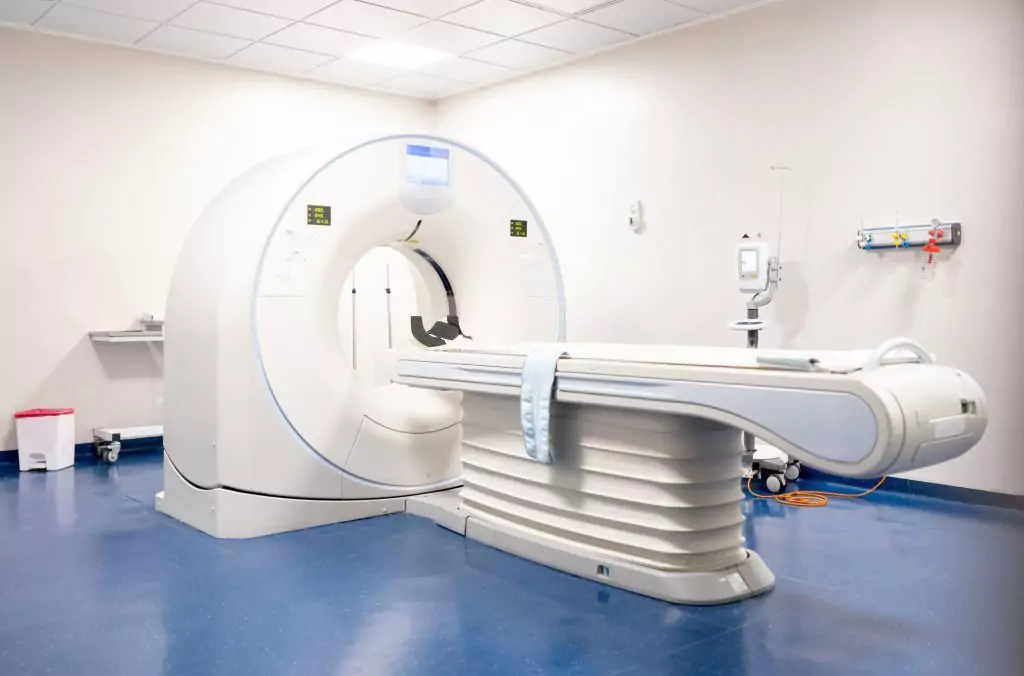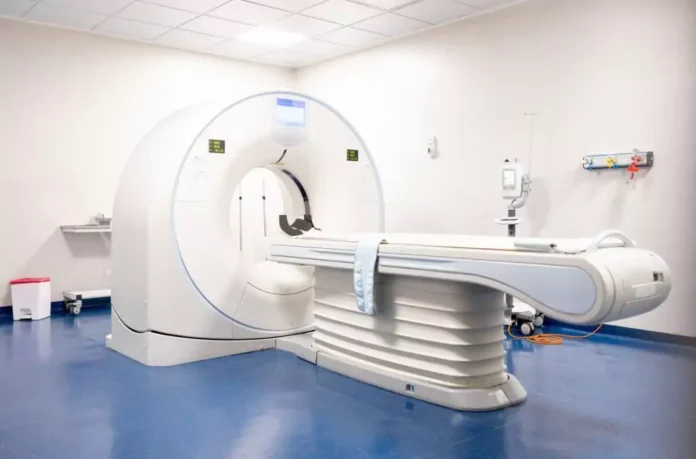Introduction
Medical imaging has become an integral part of healthcare, playing a crucial role in diagnosing and treating various medical conditions. Among the different types of medical imaging technologies available, Magnetic Resonance Imaging (MRI) stands out as a promising tool for the future. With its ability to provide detailed images of the body’s internal structures without the use of radiation, MRI technology offers numerous advantages over other imaging modalities.

In this article, we will explore the growing importance of medical imaging in healthcare, the reasons why MRI technology is poised for a promising future, the role of MRI technicians in advancing medical imaging, the steps to becoming an MRI tech, the skills and qualities needed to excel in this field, the career opportunities available for MRI techs, the impact of artificial intelligence on the future of medical imaging, the ethical considerations and challenges in medical imaging, the potential benefits of MRI technology in early disease detection, and how MRI techs can make a difference in patient care and outcomes.
The Growing Importance of Medical Imaging in Healthcare
Medical imaging has revolutionized healthcare by providing healthcare professionals with a non-invasive way to visualize and diagnose various medical conditions. It has become an essential tool in diagnosing and treating diseases such as cancer, cardiovascular diseases, neurological disorders, and musculoskeletal conditions. Medical imaging allows doctors to see inside the body and identify abnormalities that may not be visible through physical examination alone.
There are several types of medical imaging technologies available today, each with its own strengths and limitations. X-rays are commonly used to visualize bones and detect fractures or other abnormalities. Computed Tomography (CT) scans provide detailed cross-sectional images of the body’s internal structures.
Ultrasound uses sound waves to create images of organs and tissues. Nuclear medicine imaging involves injecting a small amount of radioactive material into the body to visualize organ function. And finally, Magnetic Resonance Imaging (MRI) uses a strong magnetic field and radio waves to generate detailed images of the body’s internal structures.
Why MRI Technology is Poised for a Promising Future
MRI technology offers several advantages over other imaging modalities, making it a promising tool for the future of medical imaging. One of the main advantages of MRI is its ability to provide detailed images of soft tissues, such as the brain, spinal cord, and organs. This makes it particularly useful in diagnosing conditions that affect these structures, such as tumors, strokes, and multiple sclerosis.
Another advantage of MRI is that it does not use ionizing radiation, unlike X-rays and CT scans. This makes it a safer option for patients, especially those who require frequent imaging or are more sensitive to radiation, such as children and pregnant women. Additionally, MRI can provide functional information about the body’s organs and tissues, such as blood flow and metabolism, which can be valuable in diagnosing and monitoring certain conditions.
MRI technology has also seen continuous advancements over the years, with improvements in image quality, scan times, and patient comfort. Newer MRI machines are faster and quieter, reducing the time patients spend inside the machine and minimizing discomfort. There have also been advancements in specialized MRI techniques, such as diffusion-weighted imaging and magnetic resonance spectroscopy, which provide additional information about tissue characteristics and function.
The Role of MRI Technicians in the Advancement of Medical Imaging
MRI technicians play a crucial role in operating and maintaining MRI machines, ensuring that patients receive accurate and high-quality images. They are responsible for positioning patients correctly inside the machine, adjusting the settings to obtain optimal images, and monitoring patients throughout the procedure to ensure their safety and comfort.
In addition to their technical skills, MRI technicians also contribute to the advancement of medical imaging through their expertise and knowledge. They work closely with radiologists and other healthcare professionals to interpret images and provide valuable insights into patient care. They are often involved in research and development, helping to improve imaging protocols and techniques. MRI technicians also play a vital role in educating and training other healthcare professionals on the use of MRI technology.
Steps to Becoming an MRI Tech: Education and Training Requirements
To become an MRI technician, individuals must complete the necessary education and training requirements. The specific requirements may vary depending on the country or state, but generally, a high school diploma or equivalent is required to enter an MRI technician program.
There are different pathways to becoming an MRI technician. Some individuals choose to pursue a certification program, which typically takes one to two years to complete. These programs provide a combination of classroom instruction and hands-on clinical experience. Upon completion, students are eligible to sit for the certification exam, which is administered by professional organizations such as the American Registry of Radiologic Technologists (ARRT) in the United States.
Others may choose to pursue a degree program in radiologic technology or a related field, which typically takes two to four years to complete. These programs provide a more comprehensive education in medical imaging, including coursework in anatomy, physiology, patient care, and radiation safety. Graduates of these programs are also eligible to sit for the certification exam.
The Skills and Qualities Needed to Excel as an MRI Technician
To excel as an MRI technician, individuals need a combination of technical skills and personal qualities. Technical skills include knowledge of MRI equipment and protocols, understanding of anatomy and physiology, proficiency in image acquisition and manipulation, and ability to troubleshoot technical issues.
In addition to technical skills, MRI technicians also need certain personal qualities to succeed in this field. They must have excellent communication skills to interact with patients and explain procedures clearly. They must be detail-oriented and able to follow protocols accurately to ensure accurate image acquisition. They must also have good problem-solving skills and be able to think critically when faced with technical challenges or unexpected situations.
Empathy and compassion are also important qualities for MRI technicians, as they often work with patients who may be anxious or in pain. Being able to provide emotional support and create a comfortable environment for patients can greatly enhance their experience and cooperation during the procedure.
Exploring the Career Opportunities for MRI Techs in the Healthcare Industry
MRI technicians have a wide range of career opportunities in the healthcare industry. They can work in hospitals, clinics, imaging centers, and research facilities. They may specialize in a particular area of imaging, such as neuroimaging or musculoskeletal imaging, or work in a general radiology department.
Career growth and advancement opportunities for MRI techs are also promising. With experience and additional certifications, MRI techs can move into supervisory or managerial roles, where they oversee the operations of an imaging department or manage a team of technicians. They can also pursue further education and training to become radiologists or pursue advanced imaging modalities, such as magnetic resonance angiography or cardiac MR
The Impact of Artificial Intelligence on the Future of Medical Imaging
Artificial intelligence (AI) is revolutionizing medical imaging by enhancing the accuracy and efficiency of image interpretation. AI algorithms can analyze large amounts of imaging data and identify patterns or abnormalities that may be missed by human observers. This can help radiologists and other healthcare professionals make more accurate diagnoses and treatment decisions.
The integration of AI into MRI technology has the potential to further improve image quality, reduce scan times, and enhance the overall patient experience. AI algorithms can help optimize imaging protocols based on individual patient characteristics, reducing the need for repeat scans and minimizing radiation exposure. They can also assist in real-time image reconstruction and analysis, providing immediate feedback to the technician and radiologist.
However, there are also challenges associated with integrating AI into MRI technology. One of the main challenges is ensuring the accuracy and reliability of AI algorithms. The algorithms must be trained on large and diverse datasets to ensure they can generalize to different patient populations and imaging conditions. There are also ethical considerations regarding patient privacy and data security, as AI algorithms rely on large amounts of patient data to learn and improve.
The Ethical Considerations and Challenges in Medical Imaging
Medical imaging raises several ethical considerations and challenges that healthcare professionals, including MRI technicians, must navigate in their daily practice. One of the main ethical considerations is patient privacy and confidentiality. Medical images contain sensitive information about a patient’s health, and it is essential to ensure that this information is protected and only accessed by authorized individuals.
Another ethical consideration is radiation exposure. While MRI does not use ionizing radiation, other imaging modalities such as X-rays and CT scans do. It is important for healthcare professionals to balance the benefits of imaging with the potential risks of radiation exposure, especially in vulnerable populations such as children and pregnant women.
Informed consent is another ethical consideration in medical imaging. Patients have the right to be informed about the risks, benefits, and alternatives of any imaging procedure and to make an informed decision about their healthcare. Healthcare professionals must ensure that patients understand the purpose of the imaging procedure, the potential risks involved, and any alternative options available.
The Potential Benefits of MRI Technology in Early Disease Detection
One of the potential benefits of MRI technology is its ability to detect diseases at an early stage when they are more treatable. Early disease detection can lead to better treatment outcomes and improved patient care. For example, in cancer imaging, MRI can detect small tumors that may not be visible on other imaging modalities, allowing for early intervention and potentially curative treatment.
MRI technology can also provide valuable information about disease progression and treatment response. By monitoring changes in tumor size, blood flow, or metabolism over time, MRI can help healthcare professionals assess the effectiveness of treatment and make adjustments if necessary. This can lead to more personalized and targeted therapies, improving patient outcomes.
How MRI Techs Can Make a Difference in Patient Care and Outcomes
MRI technicians play a crucial role in patient care and outcomes by ensuring the accuracy and quality of imaging studies. By following proper protocols and positioning patients correctly, MRI techs can help radiologists and other healthcare professionals make accurate diagnoses and treatment decisions. They are often the first point of contact for patients undergoing an MRI procedure, and their ability to create a comfortable and reassuring environment can greatly impact the patient’s experience.
MRI techs also contribute to patient care by providing valuable insights into image interpretation. Their expertise and knowledge of MRI equipment and protocols can help radiologists identify subtle abnormalities or artifacts that may affect the accuracy of the diagnosis. They work closely with radiologists to ensure that the images obtained are of high quality and provide the necessary information for patient management.
Conclusion
In conclusion, medical imaging has become an essential tool in healthcare, providing healthcare professionals with a non-invasive way to visualize and diagnose various medical conditions. Among the different types of medical imaging technologies available, MRI stands out as a promising tool for the future. With its ability to provide detailed images of soft tissues without the use of radiation, MRI technology offers numerous advantages over other imaging modalities.


